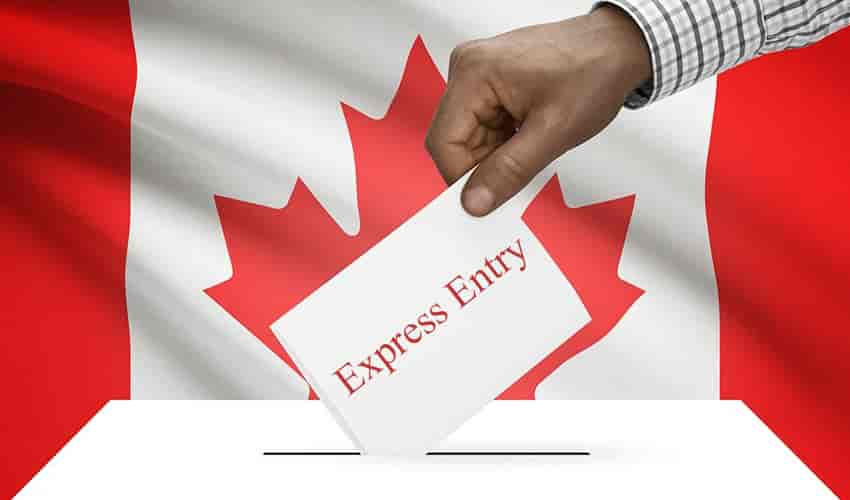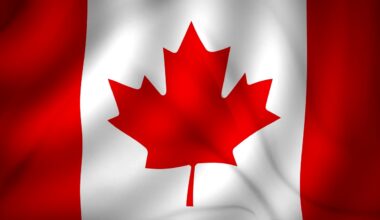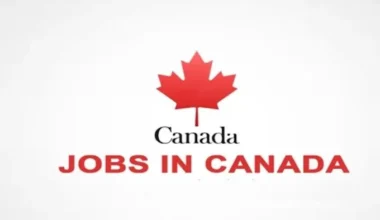Express Entry Draw Analysis: The Science Behind Immigration Selection
The systematic Express Entry draw analysis has become essential for anyone pursuing Canadian immigration through this flagship program. As the Express Entry system continues to evolve, understanding the patterns, trends, and strategic implications of each draw provides crucial insights for optimizing your immigration journey.
Immigration, Refugees and Citizenship Canada (IRCC) conducts regular draws from the Express Entry pool, selecting candidates based on their Comprehensive Ranking System (CRS) scores and other factors. Through methodical Express Entry draw analysis, we can identify selection patterns, predict future trends, and develop strategic approaches tailored to current realities. Whether you’re new to Express Entry or have been monitoring the system for years, this in-depth Express Entry draw analysis will equip you with the knowledge needed to navigate this complex immigration pathway effectively.
Historical Context: Express Entry Draw Analysis Evolution
To understand current trends, we must first examine how Express Entry draw analysis has evolved since the system’s inception:
Phase 1: 2015-2018 – The Establishment Period
The initial phase of Express Entry featured relatively predictable patterns:
Key Characteristics:
- Predominantly all-program draws
- Gradual decrease in CRS score requirements (from 800+ to 440-470 range)
- Consistent biweekly draw schedule
- Steady increase in invitation numbers
- Limited program-specific selections
This period established baseline metrics for effective Express Entry draw analysis.
Phase 2: 2019-2021 – The Pandemic Disruption
COVID-19 dramatically altered Express Entry patterns, creating unprecedented selection trends:
Key Characteristics:
- Shift to program-specific draws (primarily CEC and PNP)
- Suspension of FSWP/FSTP selections for extended periods
- Historic low CRS scores for CEC draws (as low as 75 points)
- Record-breaking single draw sizes (27,332 invitations on February 13, 2021)
- Unpredictable draw scheduling
This period demonstrated the system’s adaptability and challenged traditional Express Entry draw analysis methodologies.
Phase 3: 2022-2023 – The Recovery Transition
As pandemic restrictions eased, Express Entry underwent another transformation:
Key Characteristics:
- Return to all-program draws
- Gradual normalization of CRS score requirements
- Introduction of category-based selection rounds
- Fluctuating invitation volumes
- More strategic program management by IRCC
This transition period required more sophisticated Express Entry draw analysis approaches.
Phase 4: 2024-2025 – The Current Landscape
Today’s Express Entry system features multi-dimensional selection strategies:
Key Characteristics:
- Balanced approach combining all-program and targeted draws
- Category-based selection alongside CRS-based selection
- Strategic management of invitation volumes
- Greater alignment with specific labor market needs
- More transparent draw forecasting by IRCC
These current patterns form the foundation of our present Express Entry draw analysis.
Current Express Entry Draw Patterns: 2025 Comprehensive Analysis
 Recent Express Entry draws demonstrate several distinct patterns worth examining:
Recent Express Entry draws demonstrate several distinct patterns worth examining:
All-Program Draw Frequency and Volume Analysis
All-program draws continue to form the backbone of Express Entry selections:
Current Frequency Pattern:
- Approximately 1-2 all-program draws per month
- Typically occurring on Wednesdays
- Often alternating with program-specific or category-based rounds
- More consistent scheduling than 2022-2023 period
Invitation Volume Trends:
- Average of 3,500-4,500 invitations per all-program draw
- Quarterly patterns showing larger draws in Q2 and Q3
- Occasional “mega-draws” exceeding 7,000 invitations
- Overall invitation numbers aligned with annual immigration targets
These patterns provide predictability for comprehensive Express Entry draw analysis.
CRS Score Threshold Patterns and Implications
CRS score requirements continue to show identifiable patterns:
All-Program CRS Thresholds:
- Range of 470-495 points in recent all-program draws
- Average threshold of 483 points in 2025 draws to date
- Gradual upward trend compared to 2024 (5-10 point increase)
- Inverse relationship between invitation volume and CRS requirements
Program-Specific CRS Thresholds:
- PNP-specific draws: 670-740 points (reflecting 600-point nomination bonus)
- CEC-specific draws: 450-470 points when conducted
- FSTP-specific draws: 430-450 points on limited occasions
Understanding these thresholds is crucial for effective Express Entry draw analysis and personal strategy development.
Category-Based Selection Patterns
Introduced in 2023, category-based selection has become an integral part of Express Entry:
Active Categories in 2025:
- Healthcare sector occupations
- STEM professionals
- Trade occupations
- Transport sector workers
- French-language proficiency
- Canadian work experience in specific sectors
Selection Pattern Analysis:
- Healthcare and French-language draws occurring most frequently
- Average of 3-4 category-based draws per quarter
- Typically smaller invitation volumes (1,000-2,000 per draw)
- Generally lower CRS requirements than all-program draws
- Often targeting specific regions with labor shortages
Category-based selection has added complexity to Express Entry draw analysis but also created new opportunities for candidates below traditional CRS thresholds.
Provincial Nomination Integration Analysis
Provincial Nominee Program alignment with Express Entry continues to evolve:
Express Entry-Linked PNP Trends:
- Increasingly targeted occupational selections
- More frequent draws by major provinces (ON, BC, AB, SK, MB)
- Greater regional distribution of nominations
- Emerging focus on retention-likely candidates
- Enhanced alignment with category-based Express Entry selection
Provincial Nomination Impact:
- PNP nominations continue to provide 600 CRS points
- Average of 1-2 PNP-specific Express Entry draws per quarter
- Approximately 30% of Express Entry invitations linked to provincial nominations
- Significant variations in provincial selection criteria and processes
Provincial integration has become a crucial element of comprehensive Express Entry draw analysis.
Data Visualization: Express Entry Draw Analysis Through Numbers
Statistical analysis provides deeper insights into current Express Entry patterns:
CRS Score Distribution Analysis – 2025 YTD
| Draw Type | Average CRS | Range | Standard Deviation | Trend Direction |
|---|---|---|---|---|
| All-Program | 483 | 471-495 | 7.3 | Slightly increasing |
| PNP-Specific | 702 | 672-741 | 15.6 | Stable |
| CEC-Specific | 461 | 452-474 | 6.9 | Slightly increasing |
| Healthcare Category | 455 | 431-470 | 9.8 | Stable |
| STEM Category | 468 | 447-484 | 11.2 | Stable |
| Trades Category | 437 | 423-455 | 8.7 | Slightly decreasing |
| French-Language | 452 | 439-468 | 7.4 | Stable |
This score distribution data enables more precise Express Entry draw analysis and planning.
Invitation Volume Distribution – 2025 YTD
| Draw Type | Average Invitations | Range | % of Total Invitations |
|---|---|---|---|
| All-Program | 4,320 | 2,750-7,500 | 58.3% |
| PNP-Specific | 1,180 | 800-1,500 | 11.2% |
| CEC-Specific | 3,680 | 2,500-4,750 | 12.4% |
| Category-Based (All) | 1,540 | 750-2,250 | 18.1% |
This invitation distribution provides crucial context for comprehensive Express Entry draw analysis.
Draw Frequency Analysis – 2025 YTD
| Month | Total Draws | All-Program | PNP-Specific | CEC-Specific | Category-Based |
|---|---|---|---|---|---|
| January | 5 | 2 | 1 | 1 | 1 |
| February | 4 | 1 | 1 | 0 | 2 |
| March | 5 | 2 | 0 | 1 | 2 |
| April | 4 | 1 | 1 | 1 | 1 |
| May (to date) | 2 | 1 | 0 | 0 | 1 |
This frequency analysis helps identify patterns for future Express Entry draw analysis and prediction.
Strategic Implications of Current Express Entry Draw Analysis
Understanding these patterns allows for strategic application planning:
CRS Score Optimization Based on Draw Analysis
Express Entry draw analysis reveals strategic score targets:
Strategic CRS Thresholds:
- 490+ points: Likely invitation in next 1-2 all-program draws
- 470-489 points: Potential invitation within 2-3 months through all-program draws
- 450-469 points: May require category-based selection or CEC-specific draws
- 430-449 points: Provincial nomination or specialized category may be necessary
- Below 430 points: Provincial nomination likely required for near-term success
Score Improvement Priorities:
- Language proficiency improvements (most efficient points gain)
- Additional education credentials (substantial but longer-term points)
- Provincial nomination pursuit (highest points gain but competitive)
- Canadian work experience development (valuable for both points and CEC eligibility)
These strategic thresholds derive directly from current Express Entry draw analysis.
Timing Strategies Based on Draw Pattern Analysis
Application timing can be optimized based on Express Entry draw analysis:
Strategic Timing Approaches:
- Profile submission timing to align with expected draw schedules
- Strategic profile updates before anticipated draws
- Awareness of seasonal variation in draw sizes and frequencies
- Alignment of documentation readiness with likely invitation windows
Observed Seasonal Patterns:
- Q1 (Jan-Mar): Typically smaller, more frequent draws with higher CRS requirements
- Q2 (Apr-Jun): Often features larger draw sizes with moderately lower thresholds
- Q3 (Jul-Sep): Historically includes some “mega-draws” with lowest annual thresholds
- Q4 (Oct-Dec): Frequently shows increased category-based selections
These timing insights emerge from longitudinal Express Entry draw analysis.
Program-Specific Strategies Based on Selection Patterns
Different programs require tailored approaches based on Express Entry draw analysis:
Federal Skilled Worker Program:
- Focus on CRS optimization for all-program draws
- Emphasis on language score maximization
- Strategic education credential enhancement
- Consideration of provincial alignment for nomination
Canadian Experience Class:
- Leveraging Canadian experience for potential CEC-specific draws
- Focus on Canadian reference letter quality and specificity
- Strategic timing based on work permit validity windows
- Attention to occupation-specific category-based selections
Federal Skilled Trades Program:
- Monitoring of trades-focused category-based selections
- Emphasis on provincial trades certification alignment
- Focus on employer connections in Canada
- Trade-specific provincial nomination research
These program-specific strategies derive from comprehensive Express Entry draw analysis.
Category-Based Selection Optimization
Recent Express Entry draw analysis highlights category-specific strategies:
Healthcare Category Optimization:
- Documentation of specific healthcare credentials and experience
- Focus on regulated profession recognition pathways
- Strategic provincial alignment with healthcare shortages
- Language proficiency emphasis, including French where applicable
STEM Category Approaches:
- Clear documentation of STEM education credentials
- Detailed work reference letters highlighting technical skills
- Focus on in-demand technological specializations
- Consideration of tech-specific provincial pathways
Trades Category Strategies:
- Documentation of apprenticeship and certification
- Emphasis on Canadian equivalency of foreign qualifications
- Focus on specific trades in highest demand
- Provincial certification pathway research
French-Language Strategies:
- Official French testing to demonstrate proficiency
- Documentation of French education or work environments
- Consideration of bilingual provinces and communities
- Balanced improvement in both official languages
These category-specific approaches have emerged from recent Express Entry draw analysis.
Case Study Analysis: Express Entry Success Patterns
Examining successful applications provides valuable Express Entry draw analysis insights:
Case Study 1: All-Program Success Through CRS Optimization
Candidate Profile:
- 32-year-old software developer with master’s degree
- 5 years of specialized experience
- Initial CRS: 458 (below competitive threshold)
Strategic Approach Based on Express Entry Draw Analysis:
- Language score improvement (IELTS 8.0+ in all abilities)
- Spouse language testing and inclusion
- Additional points for Canadian sibling
Outcome:
- Final CRS: 492
- Invited in all-program draw with threshold of 488
- Processing time: 7 months from invitation to landing
This case demonstrates effective application of Express Entry draw analysis for score optimization.
Case Study 2: Category-Based Selection Success
Candidate Profile:
- 36-year-old registered nurse
- Bachelor’s degree in nursing
- Language scores at CLB 7-8
- CRS score: 387 (below all-program thresholds)
Strategic Approach Based on Express Entry Draw Analysis:
- Focus on healthcare category documentation
- Detailed nursing experience verification
- Occupational licensing research
- Provincial alignment with nursing shortages
Outcome:
- Selected in healthcare category draw despite lower CRS
- Invited with threshold of 375 for specific category
- Processing time: 8 months from invitation to landing
This case illustrates the value of category-specific strategies informed by Express Entry draw analysis.
Case Study 3: Provincial Nomination Pathway
Candidate Profile:
- 41-year-old financial analyst
- 12 years of experience in banking sector
- Language proficiency at CLB 9
- Base CRS: 415 (insufficient for all-program invitation)
Strategic Approach Based on Express Entry Draw Analysis:
- Provincial program research based on occupation
- Application to Saskatchewan’s Occupation In-Demand category
- Documentation tailored to provincial requirements
- Expression of Interest optimization for provincial selection
Outcome:
- Provincial nomination received within 4 months
- CRS score increased to 1015 with nomination
- Invited in next PNP-specific Express Entry draw
- Total processing time: 11 months from initial provincial application to landing
This case demonstrates the provincial integration strategy based on Express Entry draw analysis.
Predictive Express Entry Draw Analysis: What to Expect Next
Based on current patterns, we can project likely developments:
Short-Term Express Entry Draw Predictions (3-6 Months)
Near-term forecasting based on Express Entry draw analysis suggests:
CRS Threshold Projections:
- All-program draws likely to maintain 480-495 range
- Possible seasonal dip in thresholds during summer months
- Category-based selections continuing in 440-470 range
- PNP-specific draws stable in 690-730 range
Invitation Volume Projections:
- Probable maintenance of current average volumes
- Potential for 1-2 larger draws (6,000+) in Q3
- Continued balance between program types
- Gradual increase in category-based proportions
Draw Frequency Projections:
- Likely continuation of biweekly overall cadence
- Approximate 5-6 draws per month across all types
- Maintenance of current distribution across program types
- Possible increase in French-language draws
These short-term projections derive from current Express Entry draw analysis patterns.
Medium-Term Trend Analysis (6-12 Months)
Looking further ahead, Express Entry draw analysis suggests:
Anticipated Policy Developments:
- Potential introduction of new category-based selection criteria
- Possible refinement of existing category parameters
- Gradual integration of labor market intelligence into selection
- Enhanced provincial coordination in nomination strategies
Threshold Trend Projections:
- Gradual upward pressure on all-program CRS thresholds
- Increasing differentiation between program-specific requirements
- More variability in category-based thresholds
- Overall maintenance of competitive selection environment
Structural Evolution Possibilities:
- Potential introduction of regional-specific selection criteria
- Gradual refinement of occupation classification alignment
- Possible expansion of category-based selection proportion
- Enhanced transparency in selection forecasting
These medium-term projections represent informed analysis based on Express Entry trends.
Advanced Express Entry Draw Analysis Techniques
Sophisticated analysis methods provide deeper insights:
Statistical Correlation Analysis
Multivariate analysis reveals underlying relationships in Express Entry selections:
Key Correlational Findings:
- Strong negative correlation (-0.78) between invitation volumes and CRS thresholds
- Moderate correlation (0.53) between economic indicators and draw frequencies
- Weak correlation (0.32) between seasonal patterns and category-based selections
- Strong correlation (0.81) between immigration level plans and annual invitation totals
These statistical insights enable more nuanced Express Entry draw analysis.
Comparative Program Analysis
Comparing different immigration pathways provides strategic context:
Express Entry vs. Provincial Base Programs:
- Express Entry: Faster processing but higher competitive thresholds
- Provincial Base: More targeted selection but longer overall timelines
- Express Entry: Greater geographical flexibility post-landing
- Provincial Base: Often lower qualification thresholds but more restrictions
Express Entry vs. Other Federal Programs:
- Express Entry: Primarily points-based selection vs. qualitative assessment
- Greater processing predictability in Express Entry
- More transparent selection criteria in Express Entry
- Generally faster processing in Express Entry
These comparisons provide important context for comprehensive Express Entry draw analysis.
Machine Learning Prediction Models
Advanced analytics enhance Express Entry draw analysis:
ML Model Components:
- Historical data pattern recognition
- Multiple variable correlation identification
- Anomaly detection and pattern disruption identification
- Confidence interval generation for predictions
Prediction Accuracy Metrics:
- CRS threshold prediction: ±8 points (85% confidence)
- Draw date prediction: ±4 days (80% confidence)
- Invitation volume prediction: ±20% (75% confidence)
- Category selection prediction: 70% accuracy
While not perfect, these advanced models enhance traditional Express Entry draw analysis.
Navigating Express Entry System Updates and Changes
The Express Entry system continues to evolve, requiring adaptive analysis:
Recent System Modifications and Their Impact
Recent changes have altered Express Entry draw analysis approaches:
Technical Platform Updates:
- Enhanced profile management interface
- Improved document upload system
- More detailed status tracking
- Greater transparency in application processing
Policy Framework Adjustments:
- Refinement of category-based selection parameters
- Adjustments to NOC alignment following TEER implementation
- Enhanced integration with Provincial Nominee Programs
- More strategic alignment with labor market needs
Procedural Modifications:
- Streamlined additional document requests
- Enhanced background verification processes
- More transparent processing time estimates
- Improved communication regarding draw schedules
These system evolutions require continual refinement of Express Entry draw analysis methodologies.
Adapting to Express Entry Policy Shifts
Strategic adaptation to policy changes enhances success rates:
Proactive Monitoring Approaches:
- Regular review of IRCC announcements and updates
- Attention to ministerial mandate letters and policy directions
- Monitoring of immigration levels plans and targets
- Analysis of program-specific processing data
Strategic Adaptation Techniques:
- Maintaining application flexibility for program pivots
- Developing contingency pathways for major policy shifts
- Building diversified qualification portfolios
- Staying informed of pilot program developments
This adaptive approach ensures relevant Express Entry draw analysis despite policy evolution.
Specialized Express Entry Draw Analysis for Unique Situations
Certain circumstances require tailored analytical approaches:
Analysis for Candidates Near Age Thresholds
Age points decrease every year after age 29, requiring time-sensitive strategies:





